Yesterday, was just another day for the people of the planet Reach. A mother kissed her son goodbye, with misty eyes, assuring him she'd be back soon; a couple argued about their future. And people thought about tomorrow.
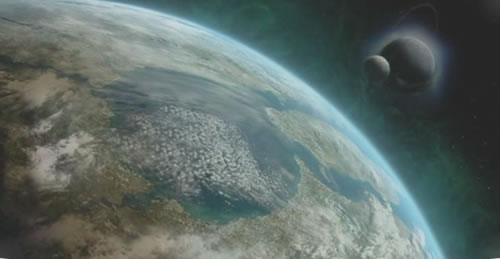
They never saw it coming. On July 24th, 2552, an alien race, known as the Covenant attacked Reach. Without warning, they struck; blinded by religion, believing their Gods to be behind them, and mankind to be an abomination to everything they stood for. A crusade had been declared against humanity - and Reach, with its many secrets, was one of the planets Humanity hoped the Covenant would never find.
Vastly outnumbered and outgunned, things looked bleak for the population of Reach. The second largest population centre under human control, 703 million people were suddenly faced with an alien force that wanted them dead, with no exceptions.
This is where you come in. Playing as Noble Six, a Spartan warrior, of a gender of your choosing, you take your place alongside five others to form Noble Team - a group of genetically modified soldiers, who, along with the rest of the UNSC - humanity's army - are tasked with countering the Covenant invasion - striking wherever they can, and holding off the unrelenting Hordes, to buy as much time for the population to escape as they possibly can.
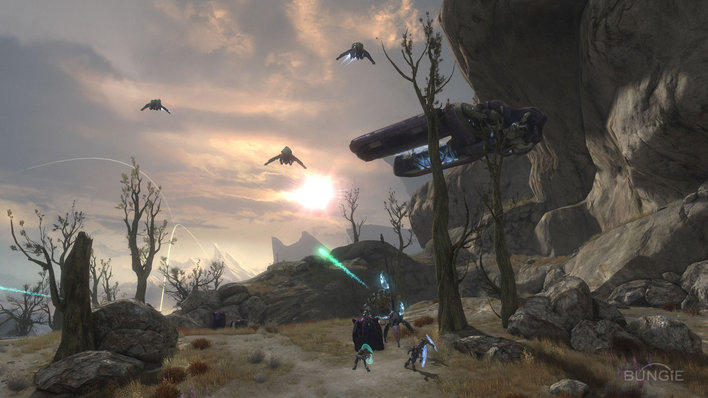
They're here. It's up to you to stop them.
But, although Halo: Reach has obviously set some lofty goals for its story, it's sad that it all too often falls short of the mark. If you haven't been following the TV adverts, and aren't already a massive fan of the series, you'll often be completely lost here, as you're dropped into the game with little introduction to where you are, who you are, and why you're meant to be killing all these aliens. I've just spent the past three hours researching the backstory of Reach, as even I, as a big Halo fan myself, had trouble understanding, or even following the story of the game. And I've seen all the adverts. The situation is never really explained in the game - instead, you're required to go into the game, having already read up on the story, so you can know what's happening - and that's a big mistake.
Seeing as you're fighting alongside your brothers-and-sister in arms, there's a large emphasis put on the human interest story here. Although they're genetically modified super soldiers, you're meant to think that your Spartan friends are, well, exactly that - friends, people you care about, who are just like you. But sadly, you'll rarely feel anything for any of the members of Noble team, as they all seem to be genuinely emotionless people - apart from Jorge, who's also the only member of the team who seems to have a human side. As a bunch of jacked up, and seemingly big headed soldiers, the Spartans seem to not care about the people they're meant to be protecting - which kind of works against the entire premise of the game. You're meant to care for these people, but they're such unlikeable characters - and the story is so comparatively short - that you find it hard to be moved by any of their exploits, because you've barely even met them. You haven't been to hell and back together, because you only started playing a few hours ago, so it's hard to really give a damn.
But a game doesn't sell on its story alone, and when you put the disappointing story aside, in terms of gameplay, Halo: Reach is, mostly, a lot more impressive - even if it does have some pretty major downfalls. Following the same formula as its predecessors for the most part, Halo: Reach is an adrenaline pumping first person shooter, that thrives as much on creating an atmosphere as it does on over the top set pieces. And as much as the scripted moments will make your heart race, as you run from a lumbering mechanical monster, or defend fleeing civilian ships, it's the things that you manage to pull off yourself that'll really stick in your memory.

The Covenant are vastly superior in terms of both technology, and numbers. So why not steal some of theirs, and even the odds a bit?
One of the things that sets Halo: Reach apart from other first person shooters are the abilities you can pick up in the levels, which can be activated by pressing the left bumper. Letting you run, project a hologram of yourself, or even jetpack into the sky, these abilities help you mix things up a bit in the levels, and, when you're playing in co-op, let you take on different roles within your team - one can be the one who distracts the covenant, while the other dashes around the back, for example. But, out of all the abilities you can pick up, it's the jetpack that's easily the most enjoyable - and it was this that created one of the memorable moments we just mentioned. After firing at, and damaging a Covenant Banshee (pictured above), we watched it fly around for a bit, obviously struggling to stay airborne, before thinking to ourselves, "I'm having that." Activating our jetpack, we flew up several hundred feet, held a button, and threw the pilot out, hijacking it for ourselves, in mid air.
It's this sort of crazy, over the top action that other first person shooters don't really manage to provide - but in Halo, it's well balanced. One second, you'll be crouched on the side of a cliff; the next, you'll be in the middle of an all out war with hordes of Covenant, and the next, you'll be ferrying your team around in a helicopter, in the middle of a war torn, burning city. And seeing as every enemy is vastly different, they'll all require a different strategy to take them out. Helping to keep things interesting, while you can certainly take out enemies by simply firing entire clips at them, each enemy has specific strengths and weaknesses, which certain weapons can then exploit. The badger-like Grunts, for example, are covered with armour everywhere but their head, whereas the more terrifying looking Elites have a recharging shield, which you'll have to wear down before you can actually do any damage. All of the enemies' weaknesses can be exploited, but we won't spoil exactly how you do that here - just experiment for yourself!
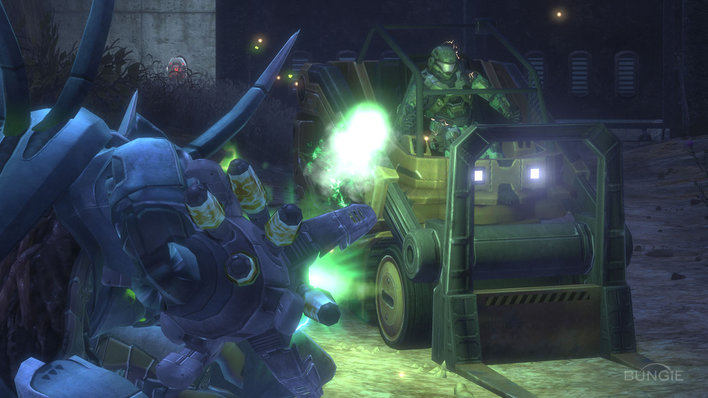
We don't think the forklift truck's going to help much against that Hunter.
Unfortunately, however, despite the over the top action, as we mentioned earlier, the campaign mode falls down in a number of places, and often is more frustrating than it really should be. The hardest enemy in the game, known as "Hunters", now seem almost completely unstoppable, with their practically one-hit-kill weapon now needing next to no recharge time between firing shots. In earlier Halo games, they were a lot less annoying, and their weapon took longer to recharge, which gave you time to sprint to cover - but now, they're the cause of one too many frustrating deaths you feel you simply can't avoid. It's also far too tricky to know when you're about to die, with the game choosing to simply avoid almost all visual warning (most games make the screen turn red before you die - no such warning here), while it bleeps quietly at you, in the middle of a firefight, with explosions and gunfire all around. It's similar to seeing someone about to get hit by a bus - if you saw it about to happen, you'd most likely wave your arms, and yell "LOOKOUT - THERE'S A BUS BEHIND YOU" so even if they didn't hear you, at least they might see you instead. You wouldn't sit and chirp away with all the authority of Jiminy Cricket at a Marilyn Manson concert - which is the equivalent of what Halo does.
To continue venting, there are also several continuity errors - and although it'll make no difference to someone picking up the series for the first time, it still gets on our nerves. It also makes no sense that rather than having a nice, handy torch to see in the dark, your character now has night vision - night vision, which highlights both enemies and friends in green. Just to make sense. And, for some reason, when playing in split-screen, you'll still be playing in a small letterbox, rather than having the use of the whole screen, for reasons we're still yet to understand. Even worse, Bungie have for some reason decided that it'd be a great idea to include the World's Worst Motion Blur™, which means if anyone even so much as sways, even slightly, they'll instantly turn into something that no longer resembles a highly detailed future soldier, but a blob of soup. It's distracting, and we're at a loss to explain why it's even there, seeing as the last time we checked, people didn't tend to blur intensely when they moved slightly. It even occasionally made our eyes ache, as we tried to focus on something that it's actually impossible to focus on
To add to the frustration, far too much of the story, and mission objectives, are relayed in game - and, in its infinite wisdom, the game decided not to include subtitles for the messages your team relays in game - which is sure to affect players who are deaf, or hard of hearing. It's not much better for people with normal hearing either, as practically every team mate has a thick accent heaped on top of their dull voice, which makes hearing what they're telling you to do overly tricky, and far too easy to miss.
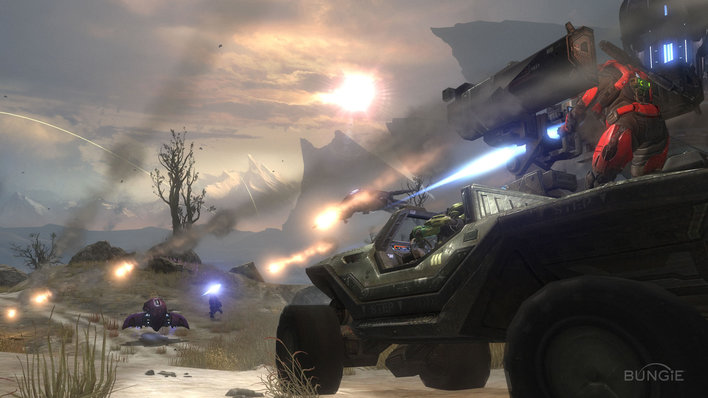
Played in four player co-op, Halo is still a blast
But, of course, the story mode isn't the only thing people buy a Halo game for, as the multiplayer is where people now spend most of their time. In fact, with the brevity of the story, it's obvious that the multiplayer is Bungie's main concern in Halo: Reach - which represents something of a problem for people like me. Pitting you either against up to fifteen other players in a free for all, or with a team of up to seven, Halo: Reach's multiplayer is varied, and, with the right group of people, an exciting contest to see which team can work together the best.
The only problem is finding the right group of people.
Because Halo tends to attract the... stereotypical gamer, you'll often find yourself outclassed, outgunned, and outskilled online - unless you're the type who plays the game religiously, memorises every map, weapon location, and objective - and that means it's just not any fun to play. It doesn't make it any better that Bungie's matchmaking seems to be pretty atrocious. When a team of us, all of whom had hardly spent any time on Halo: Reach tried to find a "similarly skilled" team to play at a new mode called Invasion, it pitted us against a team that may as well be professional gamers. In Invasion, one team plays as the Spartans, while the other plays as Covenant Elites, and it's up to one team to defend a number of objectives, while the other team attacks. You then switch over, and the team who achieves the majority of their goals, wins. At the end of the match, we hadn't got any. You found your average life was around twenty seconds, at most, and after spending what felt like a lifetime dying, and waiting to respawn, you ended up wanting to never go near the multiplayer again. That's the sort of experience Bungie should have done something to sort out. It doesn't help matters any further that there's no explanation of the objective of each mode, either - and with so many on offer, surely it would have been an idea to have some sort of in game explanation of what you're meant to be doing?
But then, we played a mode called Headhunter - which was actually a lot of fun. A properly tight game, our team of inexperienced players took on another, with the premise being that every time you killed someone with a headshot, they dropped a skull. It was up to you to pick up the skull, and take it to a skull drop off point, which would change periodically as the game went on - the team with the most skulls at the end wins. A great mix of capture the flag style gameplay, and a standard deathmatch, this was both fun, and a close game - we won with 51 to the other team's 41 - although both teams had plenty of time in the lead.
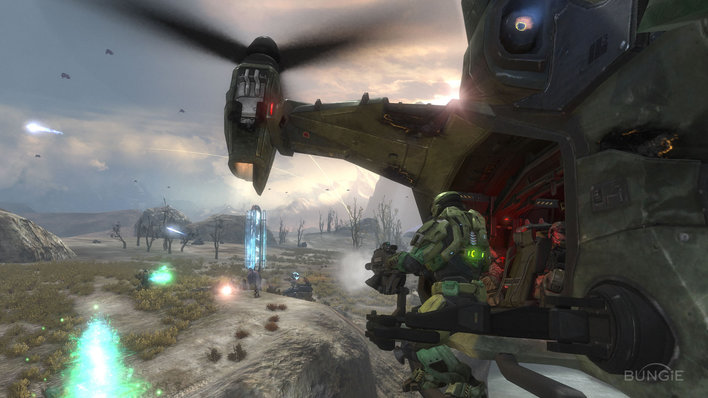
Make sure you pick the best person on your team to fly. You don't want them taking you down with them.
When Halo's multiplayer works, nothing can come close, and with the right group of people, it's a blast. However, from our experience playing previous Halo games online, it's unlikely you'll find the right group of people to play with. Perhaps in the near future, we should arrange some Halo 101 matches, so people can play with other people, who don't spend every day memorising the maps - it'd be as fun for us as it'd be for you.
To try to give the game some longevity, Bungie have added a number of challenges to the game, which change on a weekly, or daily basis - there are four new challenges each day, with the fifth being a challenge for that week. The problem is, it's all got far too much of a multiplayer basis, as unless they're for doing something in campaign mode, everything is for Matchmaking - which means you'll have to play online, either against, or with strangers - even in modes like Firefight, where it's completely unnecessary. While this is definitely better than forcing you into Ranked matches, which would mean you couldn't play with your friends, at all, it still forces you to either play with, or against random strangers. Which, after the aforementioned experience, I don't really like doing.
The other new element for Halo: Reach is something called Forge World - which is basically a map editor, with a fancy name. Allowing you to spread your creative wings, this is where the good side of Halo's online community comes out, with all sorts of weird, wonderful, and wacky maps, levels, and game modes being made available on a daily basis. And, thanks to the ability for anyone to browse an in game list of the most popular files, or share their own creations with the world, it's surprisingly easy to find, download, and play entirely new maps. Some of the things people are coming up with are out of this world.
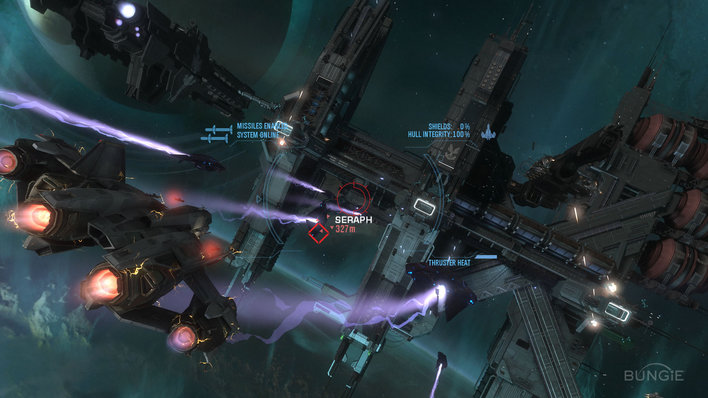
Speaking of out of this world, the new space combat section is surprisingly enjoyable, although it's again, flawed - with no icons showing you where the enemies are when they're off the screen, you'll find yourself circling aimlessly too often.
The problem is, we're running out of space now, and we're still not sure what to give Halo: Reach. It's tricky, because there are so many pluses and minuses. The campaign is an enjoyable thrill ride, that keeps the gameplay that made Halo the mega hit it is today, and expands on it - but with several annoying changes that really detract from the experience. The competitive multiplayer, we really can't score, because it's such a mixed bag - equal parts brilliant and nightmarish.
Despite the solid underlying gameplay being every bit as enjoyable as before, all the niggles add up to make a game that you just won't enjoy as much as you really should - and perhaps that's the most disappointing thing. Bungie had a chance to tell a story, and make a game that really sucked you into the Halo world - the marketing campaign was given a simple brief to tell a tale of heroes, and expand the market outside the "Halo fanboys". Instead, what they've done is make a game designed for them, with seemingly little effort to make it accessible to anyone else - with the one element that could have attracted outside interest - the story - so poorly executed, and brief, that it won't have any effect at all. And that's probably what disappoints us the most.
What's left is a game that's enjoyable, but not as much as it should be - that's great in co-op, but less so online, and that's story is weaker than arthritic giraffe's knees on a winter's morning. It's a testament to the quality of Halo's gameplay that we're giving it the score below. It's not a bad game by a long shot, but it's neither the send off we'd hoped Bungie would give the Halo series.
Format Reviewed: Xbox 360



















